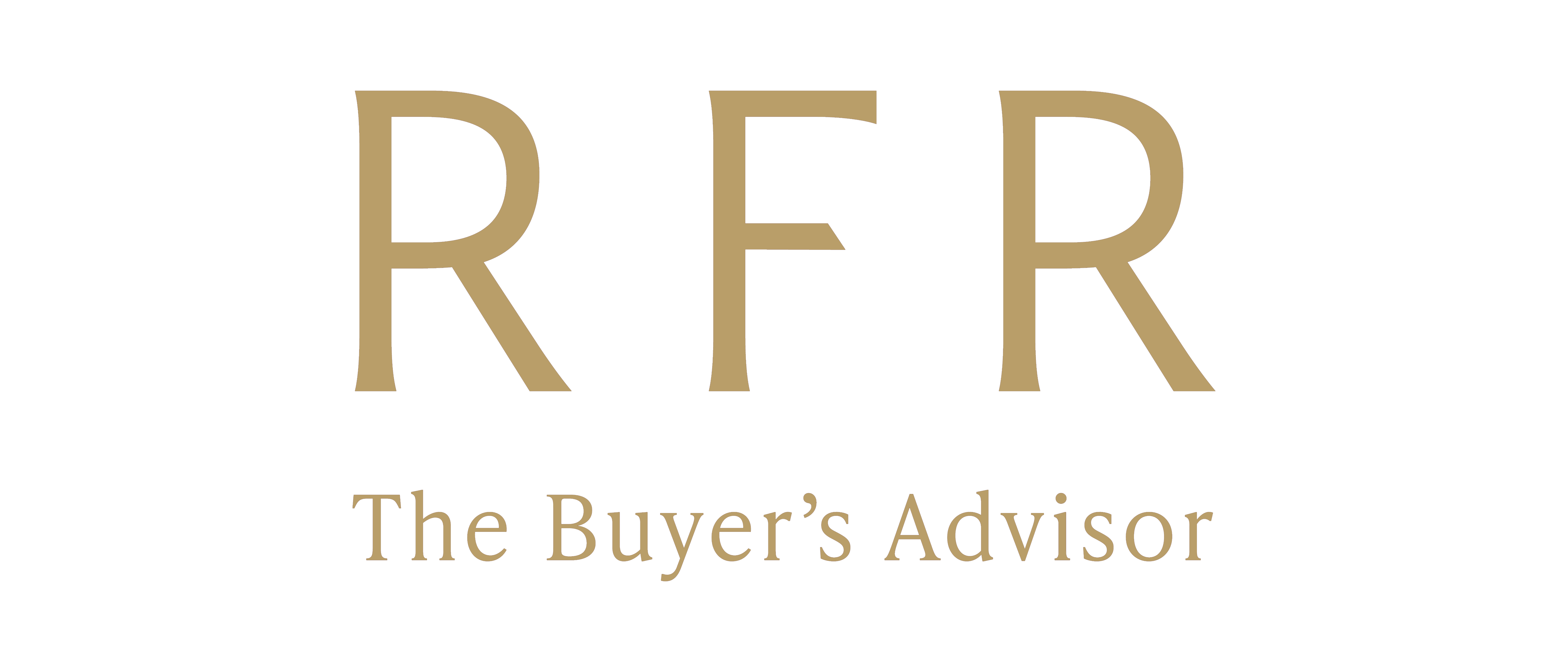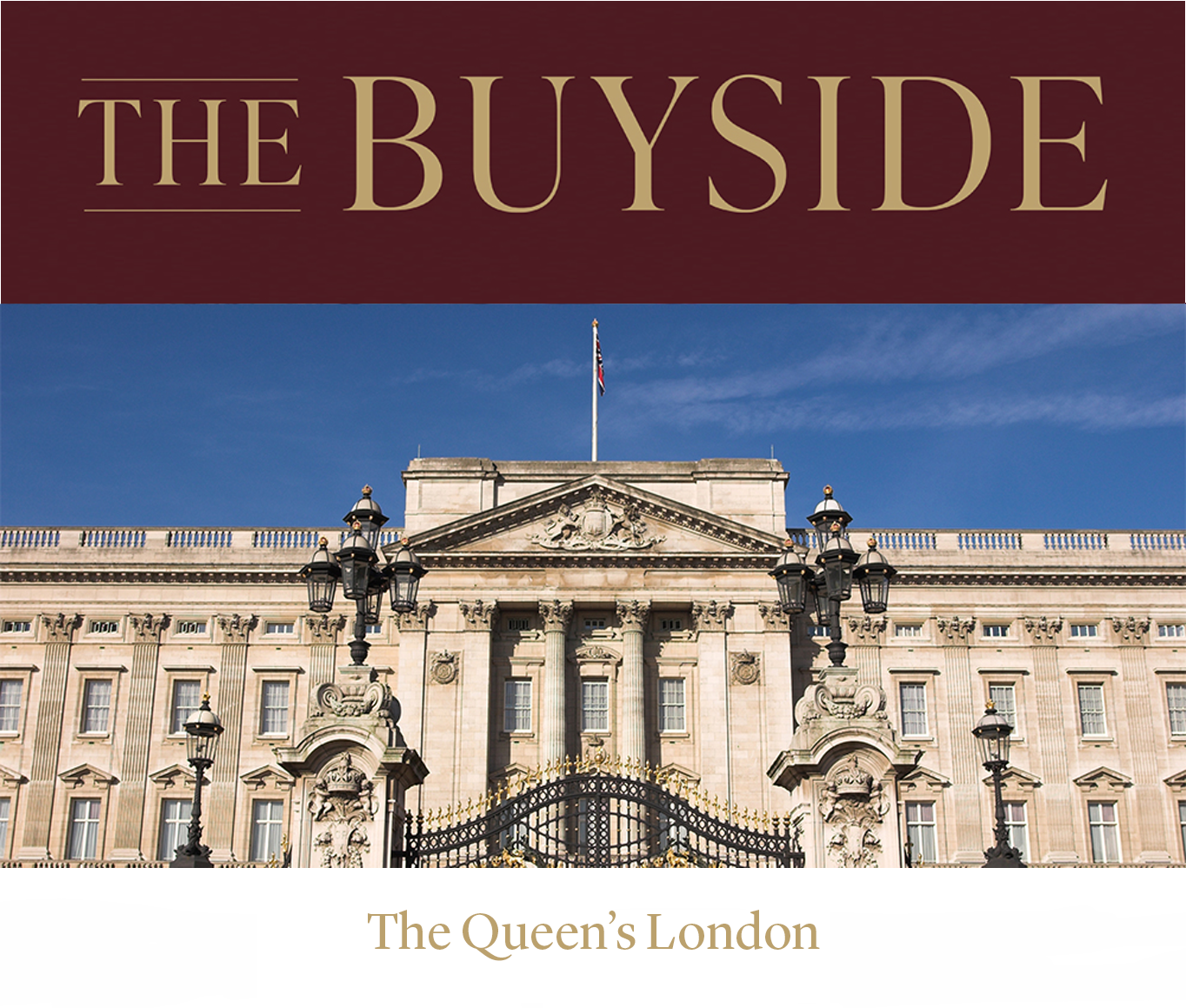
We culminate a collective period of mourning across London, the nation and globe, by reflecting on Queen Elizabeth’s interaction with the special properties that she called home before and during her long and devoted reign. In 2017, the Queen herself remarked that: “we think of our homes as places of warmth, familiarity, and love; of shared stories and memories. There is a timeless simplicity to the pull of home”. From Clarence House to Buckingham Palace, these important historical buildings – the spectacular facades and state rooms – formed the backdrop for much of the Queen’s public life. Behind closed doors, they were also home, a private space away from the public gaze where she could devote herself to her family and her beloved dogs and horses, surrounded by loyal and dedicated household staff.
Early years in Mayfair and Piccadilly
Born in a townhouse in Mayfair on 21 April 1926, Princess Elizabeth Alexandra Mary Windsor wasn’t originally predestined to be Queen. Based just off bustling Berkeley Square, 17 Bruton Street was the London home of her maternal grandparents, the Earl and Countess of Strathmore, and it is where Princess Elizabeth spent her first few months, alongside the Duke and Duchess of York, whilst renovation works were being completed on the family’s next London home. With its white Palladian front, the interior contained a vaulted entrance hall and ornate Rococo ceilings in the style of architect Isaac Ware.
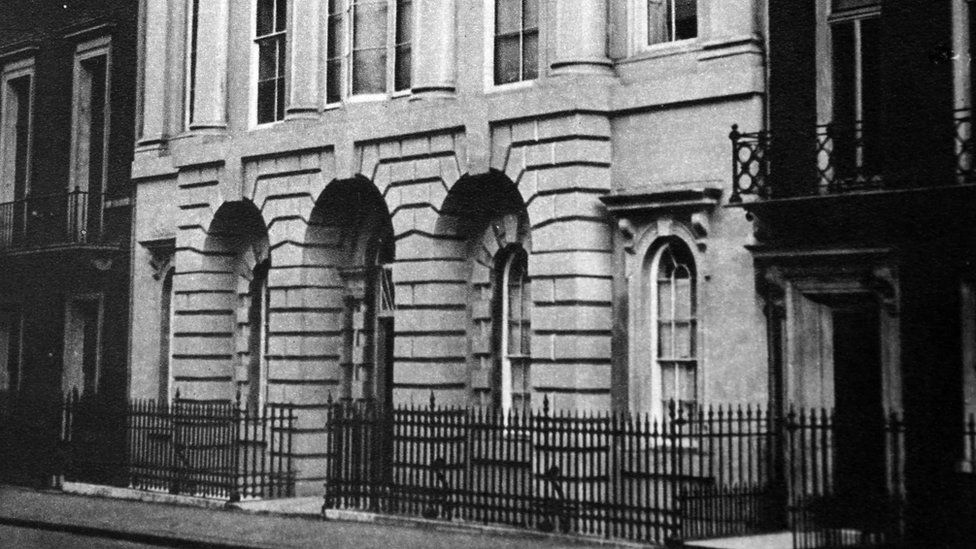
17 Bruton Street Credit: BBC
The Princess moved into 145 Piccadilly next, a five-story terraced Georgian house which overlooked Green Park. Located near to Hyde Park Corner, the building comprised a ballroom, library, 25 bedrooms, as well as an assembly of nurseries on the fourth floor for the young princess, and latterly Princess Margaret who joined her in 1930. The sisters were educated at home in a schoolroom on the third floor and also spent time playing in Hamilton Garden, which was a small park shared by the residents of neighbouring buildings. It was a time when her affection for corgis and horses also emerged. Much of her early years were also spent at White Lodge in Richmond, which was the address listed for her parents on Princess Elizabeth’s birth certificate, and where they had lived after their wedding.
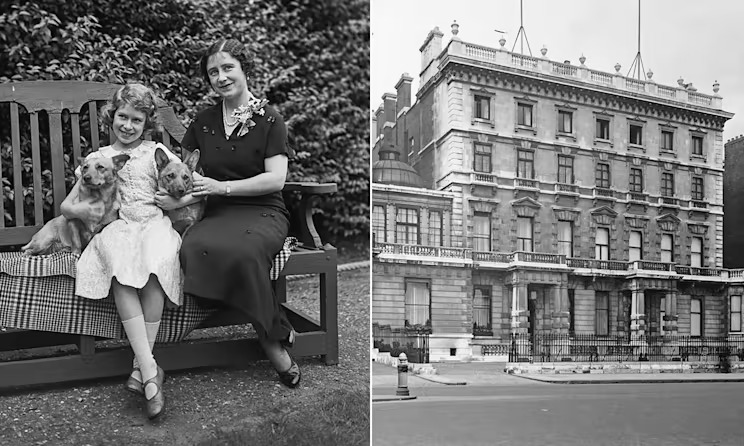
Princess Elizabeth and her Mother in the garden of 145 Piccadilly. Credit: BBC
Buckingham Palace
The sudden abdication of Edward VIII in 1936 propelled the family to Buckingham Palace when her father became King George VI. Her parents’ coronation took place at Westminster Abbey in 1937, where Elizabeth’s would follow in 1953. She wrote “I thought it all very, very wonderful and I expect the Abbey did, too. The arches and beams at the top were covered with a sort of haze of wonder as Papa was crowned, at least I thought so.” The Princess’ new lodgings at Buckingham Palace, initially built as a town house in 1703, were extended by architects John Nash and Edward Blore during the 19th century to include 775 rooms. During World War II, Elizabeth and Margaret spent most of their time outside of London in Windsor Castle. Recollecting on joining the VE day celebrations in May 1945, Elizabeth told the BBC “I remember lines of unknown people linking arms and walking down Whitehall, and all of us were swept along by tides of happiness and relief.”
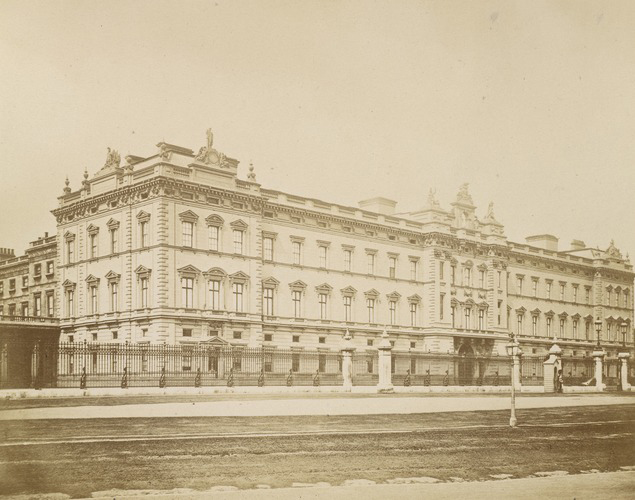
Buckingham Palace. Credit: Royal Collection
Clarence House
After her marriage to Prince Philip at Westminster Abbey on 20 November 1947, the newly-weds moved into Clarence House, which had been designed by architect John Nash, and was used as their London home. Prince Charles was born the following year at Buckingham Palace – where Princess Elizabeth had been christened in the private chapel 22 years earlier – and Anne, Princess Royal, was born at Clarence House in 1950. When Princess Elizabeth very suddenly became Queen in 1952 following her father’s unexpected death, she once again returned to live in Buckingham Palace, which remained her prime residence until 2020 when she relocated to Windsor Castle permanently.
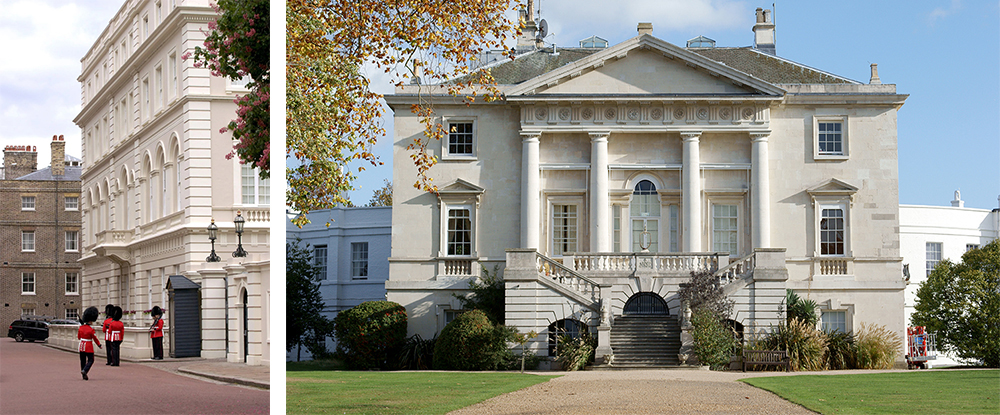
Clarence House Credit: House & Garden.
White Lodge, Richmond
Joyful Jubilee
Jubilees were threaded across the arc of her life and saw much celebration congregate in the city: from her Silver Jubilee in 1977 when 4,000 street parties in London reportedly took place, to the Golden Jubilee which began with a classical music concert at Buckingham Palace and culminated in a monumental firework display. The Diamond Jubilee featured a chain of 2012 beacons lit across the country, whilst her final Platinum jubilee in February of this year marked her monumental 70-year reign.
Bricks and mortar have played a pivotal role during the Queen’s reign, providing a backdrop of strength and stability amid years of technological, political and economic change. As King Charles III takes to the throne, we will see some of the key royal residences in London repurposed and reclaimed in the months and years ahead. As Londoners, we are so fortunate to share in these important historical buildings; royal homes that will provide the backdrop for the next chapter of the royal family’s reign.
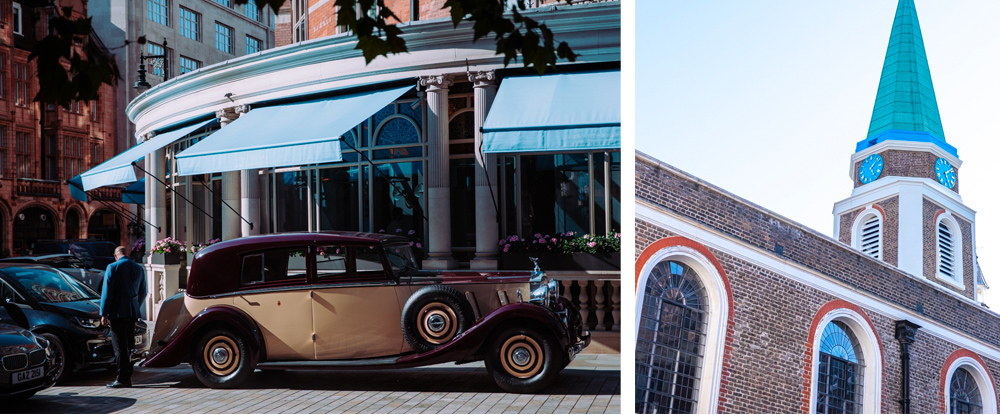
As ever, if you would like to discuss a specific property mandate or any of the themes in
The Buyside, please do contact the RFR team.
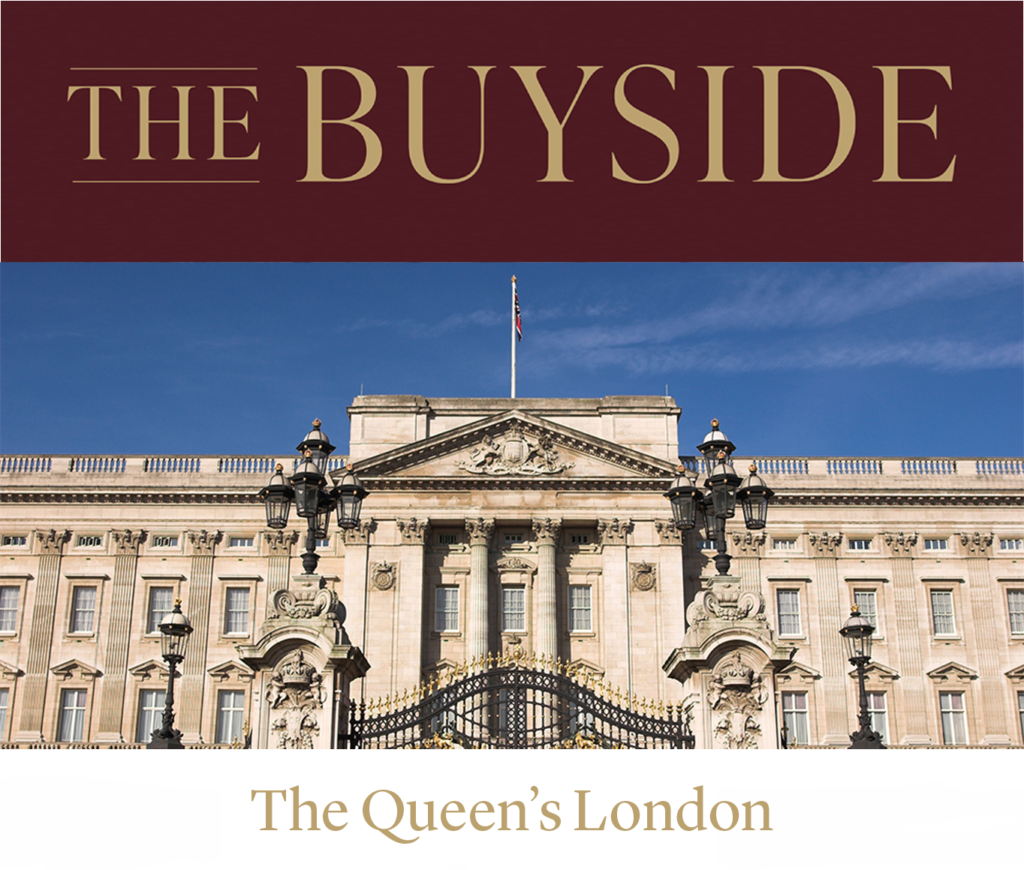
We culminate a collective period of mourning across London, the nation and globe, by reflecting on Queen Elizabeth’s interaction with the special properties that she called home before and during her long and devoted reign. In 2017, the Queen herself remarked that: “we think of our homes as places of warmth, familiarity, and love; of shared stories and memories. There is a timeless simplicity to the pull of home”. From Clarence House to Buckingham Palace, these important historical buildings – the spectacular facades and state rooms – formed the backdrop for much of the Queen’s public life. Behind closed doors, they were also home, a private space away from the public gaze where she could devote herself to her family and her beloved dogs and horses, surrounded by loyal and dedicated household staff.
Early years in Mayfair and Piccadilly
Born in a townhouse in Mayfair on 21 April 1926, Princess Elizabeth Alexandra Mary Windsor wasn’t originally predestined to be Queen. Based just off bustling Berkeley Square, 17 Bruton Street was the London home of her maternal grandparents, the Earl and Countess of Strathmore, and it is where Princess Elizabeth spent her first few months, alongside the Duke and Duchess of York, whilst renovation works were being completed on the family’s next London home. With its white Palladian front, the interior contained a vaulted entrance hall and ornate Rococo ceilings in the style of architect Isaac Ware.

17 Bruton Street Credit: BBC
The Princess moved into 145 Piccadilly next, a five-story terraced Georgian house which overlooked Green Park. Located near to Hyde Park Corner, the building comprised a ballroom, library, 25 bedrooms, as well as an assembly of nurseries on the fourth floor for the young princess, and latterly Princess Margaret who joined her in 1930. The sisters were educated at home in a schoolroom on the third floor and also spent time playing in Hamilton Garden, which was a small park shared by the residents of neighbouring buildings. It was a time when her affection for corgis and horses also emerged. Much of her early years were also spent at White Lodge in Richmond, which was the address listed for her parents on Princess Elizabeth’s birth certificate, and where they had lived after their wedding.

Princess Elizabeth and her Mother in the garden of 145 Piccadilly. Credit: BBC
Buckingham Palace
The sudden abdication of Edward VIII in 1936 propelled the family to Buckingham Palace when her father became King George VI. Her parents’ coronation took place at Westminster Abbey in 1937, where Elizabeth’s would follow in 1953. She wrote “I thought it all very, very wonderful and I expect the Abbey did, too. The arches and beams at the top were covered with a sort of haze of wonder as Papa was crowned, at least I thought so.” The Princess’ new lodgings at Buckingham Palace, initially built as a town house in 1703, were extended by architects John Nash and Edward Blore during the 19th century to include 775 rooms. During World War II, Elizabeth and Margaret spent most of their time outside of London in Windsor Castle. Recollecting on joining the VE day celebrations in May 1945, Elizabeth told the BBC “I remember lines of unknown people linking arms and walking down Whitehall, and all of us were swept along by tides of happiness and relief.”

Buckingham Palace. Credit: Royal Collection
Clarence House
After her marriage to Prince Philip at Westminster Abbey on 20 November 1947, the newly-weds moved into Clarence House, which had been designed by architect John Nash, and was used as their London home. Prince Charles was born the following year at Buckingham Palace – where Princess Elizabeth had been christened in the private chapel 22 years earlier – and Anne, Princess Royal, was born at Clarence House in 1950. When Princess Elizabeth very suddenly became Queen in 1952 following her father’s unexpected death, she once again returned to live in Buckingham Palace, which remained her prime residence until 2020 when she relocated to Windsor Castle permanently.

Clarence House Credit: House & Garden.
White Lodge, Richmond
Joyful Jubilee
Jubilees were threaded across the arc of her life and saw much celebration congregate in the city: from her Silver Jubilee in 1977 when 4,000 street parties in London reportedly took place, to the Golden Jubilee which began with a classical music concert at Buckingham Palace and culminated in a monumental firework display. The Diamond Jubilee featured a chain of 2012 beacons lit across the country, whilst her final Platinum jubilee in February of this year marked her monumental 70-year reign.
Bricks and mortar have played a pivotal role during the Queen’s reign, providing a backdrop of strength and stability amid years of technological, political and economic change. As King Charles III takes to the throne, we will see some of the key royal residences in London repurposed and reclaimed in the months and years ahead. As Londoners, we are so fortunate to share in these important historical buildings; royal homes that will provide the backdrop for the next chapter of the royal family’s reign.

As ever, if you would like to discuss a specific property mandate or any of the themes in
The Buyside, please do contact the RFR team.
